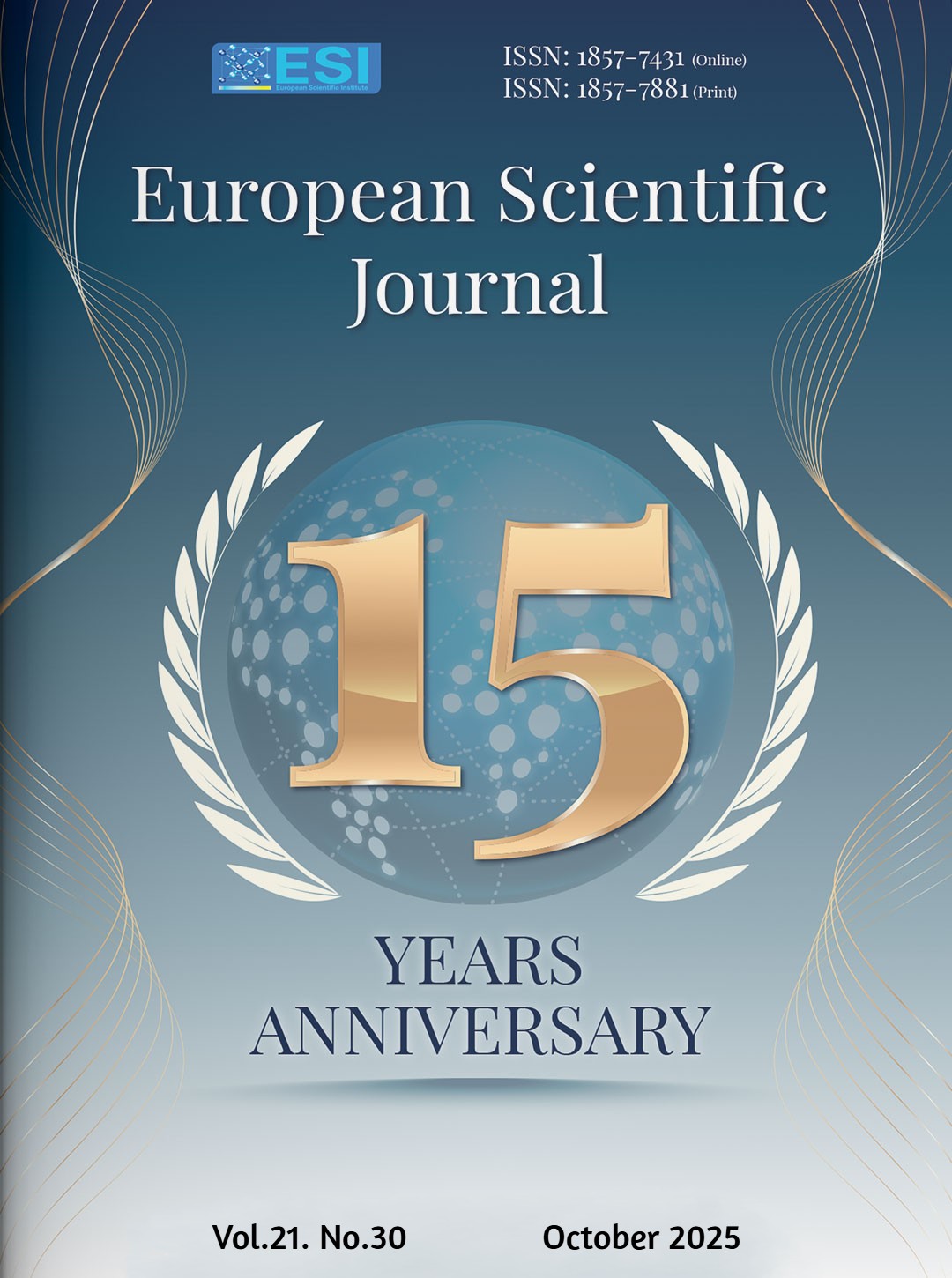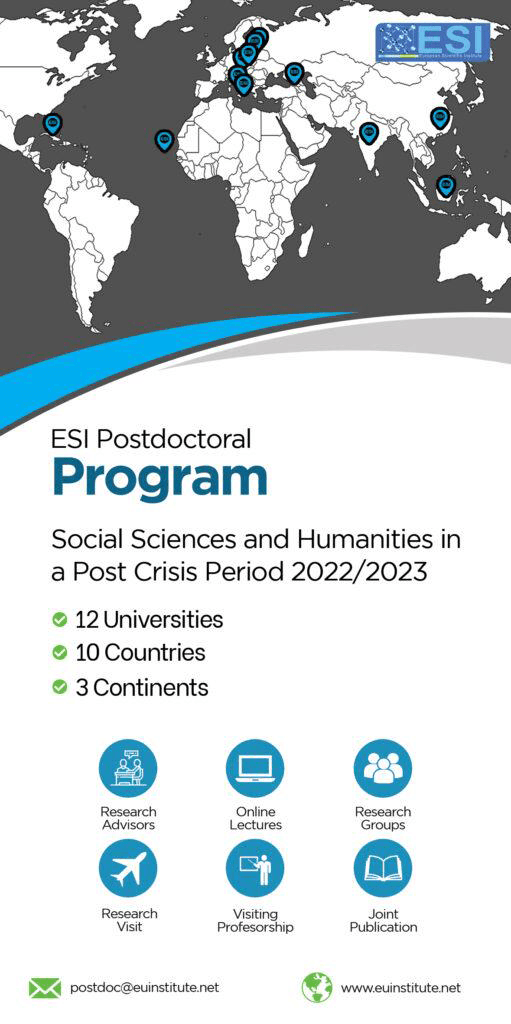The Seasonal Assessment of Heavy Metals Pollution in the Waters of the Mediterranean and Atlantic Seas of Morocco
Abstract
Heavy metal pollution in marine environments poses a major risk to ecosystems and human health due to the persistence, bioaccumulation, and toxicity of metals. The current study aimed to analyze the seasonal patterns of cadmium (Cd), lead (Pb), zinc (Zn), iron (Fe), copper (Cu), chromium (Cr), and nickel (Ni) in seawater samples from two Moroccan coastal regions, Mediterranean Coast (Nador) and Atlantic Coast (Casablanca), during autumn and spring of the 2023-2024 season. A total of 36 water samples were collected from each coast and were analyzed using ICP-AES following the WHO and USEPA guidelines. The data showed that during both coastal regions, Cd concentrations were 0.002 mg/L to 0.020 mg/L, which is above the WHO limit of 0.003 mg/L. Pb concentrations were also higher than the WHO guideline of 0.01 mg/L and reached 0.036-0.120 mg/L, particularly in Casablanca. On the other hand, Fe and Zn concentrations of 0.010-0.255 mg/L and 0.061-0.255 mg/L, respectively, were within safe limits. Seasonal changes showed greater Cd and Pb concentrations in autumn, most likely due to industrial discharges and agricultural runoff. The study raises alarm on the high levels of Cd and Pb contamination in the Mediterranean region and the need to develop policies to properly manage wastewater, regulate industries, and conduct biomonitoring of marine species.
Downloads
Metrics
PlumX Statistics
References
2. Ahmed, M. K., Baki, M. A., Islam, M. S., Kundu, G. K., Habibullah-Al-Mamun, M., Sarkar, S. K., & Hossain, M. M. (2021). Human health risk assessment of heavy metals in tropical fish and shellfish collected from the river Buriganga, Bangladesh. Environmental Science and Pollution Research, 28(9), 10658–10670. https://doi.org/10.1007/s11356-020-11019-6
3. Ahmed, M., Zhou, J. L., & Ho, J. (2021). Heavy metal toxicity in marine organisms and implications for human health. Marine Pollution Bulletin, 173, 112982. https://doi.org/10.1016/j.marpolbul.2021.112982
4. Ali, H., & Khan, E. (2019). Trophic transfer, bioaccumulation, and biomagnification of non-essential hazardous heavy metals and metalloids in food chains/webs: Concepts and implications for wildlife and human health. Human and Ecological Risk Assessment, 25(6), 1353–1376. https://doi.org/10.1080/10807039.2018.1469398
5. Amiard, J. C., Amiard-Triquet, C., Barka, S., Pellerin, J., & Rainbow, P. S. (2006). Metallothioneins in aquatic invertebrates: Their role in metal detoxification and their use as biomarkers. Aquatic Toxicology, 76(2), 160–202. https://doi.org/10.1016/j.aquatox.2005.08.015
6. Amiard, J. C., Amiard-Triquet, C., & Rainbow, P. S. (2021). Metals: Sources, toxicity and remediation. CRC Press.
7. Anweting, I. A., Numbere, A. O., & Okafor, J. I. (2024). Heavy metal pollution and ecological risk assessment in sediments from the Gulf of Guinea. Marine Pollution Bulletin, 185, 114269. https://doi.org/10.1016/j.marpolbul.2023.114269
8. Baghdadi, D. M. (2012). Pollution of the marine environment and human health: Measure, assessment, and impact of chemical and biological contaminants in fishery products on the Moroccan coast (Doctoral dissertation). Abdelmalek Essaadi University, Faculty of Science and Technology, Tangier, Morocco.
9. Behra, R., Sigg, L., & Weilenmann, U. (2002). Copper and zinc content of periphyton from two rivers as a function of dissolved metal concentration. Aquatic Sciences, 64(3), 300–306. https://doi.org/10.1007/s00027-002-8074-0
10. Bessa, F., Barría, P., Neto, J. M., Frias, J., Otero, V., Sobral, P., & Marques, J. C. (2020). Microplastics in Mediterranean coastal area: Toxicity and impact for marine biota. Environmental Pollution, 263, 114429. https://doi.org/10.1016/j.envpol.2020.114429
11. Bounoua, L., Collatz, G. J., Los, S. O., Sellers, P. J., Dazlich, D. A., Tucker, C. J., & Randall, D. A. (1999). Interannual variability of vegetation cover in Morocco. International Journal of Remote Sensing, 20(5), 961–967. https://doi.org/10.1080/014311699213247
12. Bouthir, F., Chafik, A., & Mouzdahir, A. (2006). Environmental impact of industrial releases: The accumulation of chromium in the aquatic compartments along the Casablanca–Mohammedia coastline. Water Quality Research Journal of Canada, 41(4), 418–426. https://doi.org/10.2166/wqrj.2006.046
13. Duce, R. A., LaRoche, J., Altieri, K., Arrigo, K. R., Baker, A. R., Capone, D. G., Cornell, S., Dentener, F., Galloway, J., Ganeshram, R. S., Geider, R. J., Jickells, T., Kuypers, M. M., Langlois, R., Liss, P. S., Liu, S. M., Middelburg, J. J., Moore, C. M., Nickovic, S., …Zamora, L. M. (2008). Impacts of atmospheric anthropogenic nitrogen on the open ocean. Science, 320(5878), 893–897. https://doi.org/10.1126/science.1150369
14. El Baz, S., Addoun, F., Bakkali, M., & El Amrani, R. (2022). Assessment of heavy metal contamination in sediments from the Moroccan Mediterranean coast. Marine Pollution Bulletin, 174, 113185. https://doi.org/10.1016/j.marpolbul.2021.113185
15. El Baz, A., Hakkou, R., & El Amrani, R. (2022). Assessment of heavy metal contamination in Moroccan coastal waters. Environmental Science and Pollution Research, 29, 12345–12360. https://doi.org/10.1007/s11356-021-17618-2
16. El Morhit, M., El Houssaine, A., & Fekhaoui, M. (2012). Seasonal and spatial variation of heavy metals in the intertidal sediments of the Oued Souss estuary (Bay of Agadir, Morocco). African Journal of Environmental Science and Technology, 6(3), 116–123. https://doi.org/10.5897/AJEST11.156
17. El Moumni, B., El Morhit, M., Chafi, A., & El Houssaine, A. (2015). Assessment of heavy metal contamination in marine sediments from the Moroccan coastal area. Environmental Earth Sciences, 73(8), 4625–4638. https://doi.org/10.1007/s12665-014-3725-1
18. El Nemr, A. (2020). Impact, monitoring and management of environmental pollution. Nova Science Publishers.
19. European Union. (2021). Water Framework Directive. Official Journal of the European Union, L327/1. https://eur-lex.europa.eu/legal-content/EN/TXT/?uri=celex%3A32000L0060
20. Fahssi, A., & Chafi, A. (2015). Contribution to the study of metal bioaccumulation in sediments and aquatic organisms of the Saidia coast. European Scientific Journal, 11(5), 334–360. https://doi.org/10.19044/esj.2015.v11n5p%25p
21. Ganjavi, M., Ezzatpanah, H., Givianrad, M. H., & Shams, A. (2010). Heavy metal contamination in fish and sediments from the coastal waters of the Persian Gulf. Environmental Monitoring and Assessment, 162(1–4), 49–59. https://doi.org/10.1007/s10661-009-0771-9
22. Jaishankar, M., Tseten, T., Anbalagan, N., Mathew, B. B., & Beeregowda, K. N. (2014). Toxicity, mechanism and health effects of some heavy metals. Interdisciplinary Toxicology, 7(2), 60–72. https://doi.org/10.2478/intox-2014-0009
23. Luo, W., Lu, Y., Wang, T., Hu, W., Jiao, W., Naile, J. E., Khim, J. S., & Giesy, J. P. (2014). Heavy metal contaminations in a soil–rice system: Identification of spatial dependence in relation to soil properties of paddy fields. Journal of Hazardous Materials, 280, 1–10. https://doi.org/10.1016/j.jhazmat.2014.07.032
24. Malafaia, G., de Souza, M. M., de Jesus, T. B., & Ribeiro, R. X. (2022). Microplastics and associated contaminants in aquatic environments: A review of ecotoxicological effects on biota. Environmental Pollution, 293, 118497. https://doi.org/10.1016/j.envpol.2021.118497
25. National Institute of Standards and Technology. (2022). Certified reference materials for heavy metal analysis. U.S. Department of Commerce. https://www.nist.gov
26. Pacyna, E. G., Pacyna, J. M., Steenhuisen, F., & Wilson, S. (2006). Global anthropogenic mercury emission inventory for 2000. Atmospheric Environment, 40(22), 4048–4063. https://doi.org/10.1016/j.atmosenv.2006.03.041
27. Pereira, M. E., Duarte, A. C., Millward, G. E., Abreu, S. N., Vale, C., & Raimundo, J. (2021). Heavy metal contamination in European coastal waters: A comparative study. Science of the Total Environment, 764, 144270. https://doi.org/10.1016/j.scitotenv.2020.144270
28. Rahman, Z., Thomas, S., Singh, V. P., & Hossain, M. A. (2021). Assessment of heavy metal contamination and human health risk in urban soils of an industrial city in Bangladesh. Environmental Geochemistry and Health, 43(1), 1–16. https://doi.org/10.1007/s10653-020-00633-y
29. Rodier, J., Legube, B., & Merlet, N. (2009). L’analyse de l’eau (9th ed.). Dunod. ISBN : 9782100541799
30. Salghi, R., Labjar, N., Bazzi, L., & Hammouti, B. (2023). Heavy metal contamination and ecological risk assessment in sediments from the Moroccan Atlantic coast. Marine Pollution Bulletin, 185, 114254. https://doi.org/10.1016/j.marpolbul.2022.114254
31. Şimşek, A., Demirtaş, M., Yıldırım, A., & Yalçın, M. (2021). Heavy metal pollution in the Turkish Mediterranean coast. Turkish Journal of Agriculture – Food Science and Technology, 9(6), 1076–1085. https://doi.org/10.24925/turjaf.v9i6.1076-1085.3827
32. United States Environmental Protection Agency. (2017). Integrated risk information system (IRIS) assessment of lead. https://www.epa.gov/iris
33. World Health Organization. (2018). Joint FAO/WHO expert committee on food additives (JECFA) assessment of cadmium, inorganic arsenic, lead, and polycyclic aromatic hydrocarbons. WHO Technical Report Series, 1011, 1–66. https://apps.who.int/iris/handle/10665/260442
34. 34.Wang, Z., Li, J., & Chen, Y. (2022). Marine pollution by heavy metals: Sources, impacts, and management. Marine Pollution Bulletin, 176, 113478.
Copyright (c) 2025 S. Karim, A. Aouniti, C. Belbachir

This work is licensed under a Creative Commons Attribution 4.0 International License.








